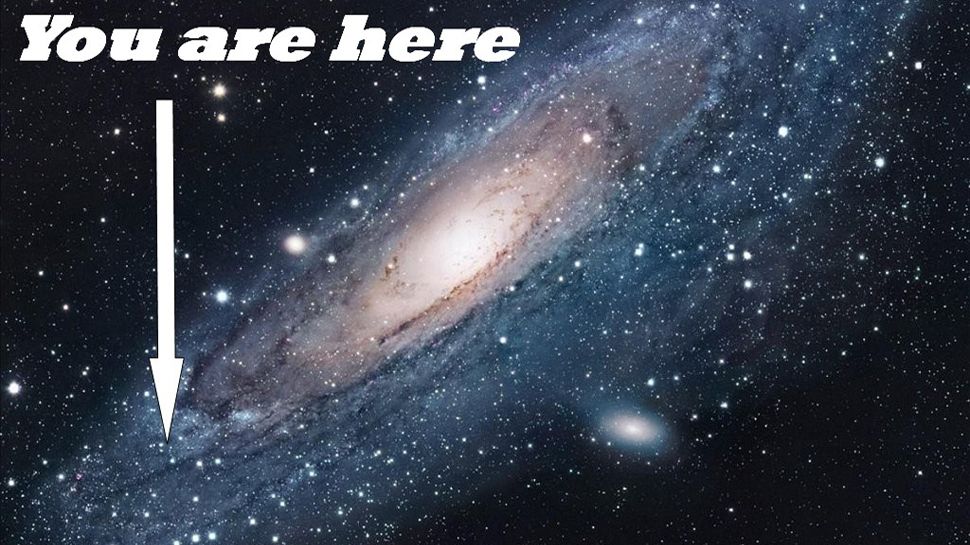The Universe Is Expanding Faster Than We Thought
Late Hubble Space Telescope discoveries recommend that the universe is extending considerably quicker than anticipated — and stargazers say the tenets of material science may should be reworked keeping in mind the end goal to comprehend why.
Researchers utilize the Hubble Space Telescope to influence exact estimations of the universe's extension to rate. Be that as it may, perceptions for another examination don't coordinate with past expectations in view of the universe's direction following the Big Bang, as indicated by an announcement from the Space Telescope Science Institute (STScI).
"The people group is truly thinking about understanding the significance of this error," Adam Riess, Nobel laureate and lead specialist on the examination depicting the new discoveries, said in the announcement. Riess is a stargazer at STScI and a teacher at Johns Hopkins University. [Our Expanding Universe: Age, History and Other Facts]
The Hubble Space Telescope measures the separation to different systems by analyzing a sort of star that shifts in shine. These stars, called Cepheid factors, light up and diminish typically that gives scientists a chance to judge the separation to them. This information is then used to quantify the universe's development rate, known as the Hubble consistent.
The new discoveries demonstrate that eight Cepheid factors in our Milky Way cosmic system are up to 10 times more distant away than any beforehand examined star of this kind. Those Cepheids are more testing to quantify than others since they live in the vicinity of 6,000 and 12,000 light-years from Earth. To deal with that separation, the scientists built up another examining strategy that permitted the Hubble Space Telescope to intermittently quantify a star's situation at a rate of 1,000 times each moment, in this manner expanding the exactness of the stars' actual splendor and separation, as indicated by the announcement.
Analysts estimated the universe's development by figuring the separation to a few extremely removed stars called Cepheid factors, which beat consistently and let specialists decide the separation to them in view of their brilliance. The eight recently estimated Cepheids are 10 times more remote away than any concentrated beforehand. At that point, the analysts contrasted the shine of those stars with the splendor of supernovas in similar universes, and contrast them and the brilliance of supernovas that are much more remote.
Scientists estimated the universe's development by figuring the separation to a few extremely far off stars called Cepheid factors, which beat frequently and let specialists decide the separation to them in light of their shine. The eight recently estimated Cepheids are 10 times more remote away than any concentrated already. At that point, the analysts contrasted the splendor of those stars with the shine of supernovas in similar universes, and contrast them and the brilliance of supernovas that are significantly more distant.
Credit: A. Field (STScl)/A. Riess (STScl/JHU)/NASA/ESA
The scientists contrasted their discoveries with before information from the European Space Agency's (ESA) Planck satellite. Amid its four-year mission, the Planck satellite mapped remaining radiation from the Big Bang, otherwise called the inestimable microwave foundation. The Planck information uncovered a Hubble steady in the vicinity of 67 and 69 kilometers for every second per megaparsec. (A megaparsec is around 3 million light-years.)
In any case, the Planck information gives a steady around 9 percent lower than that of the new Hubble estimations, which assess that the universe is growing at 73 kilometers for every second per megaparsec, thusly recommending that cosmic systems are moving quicker than anticipated, as indicated by the announcement.
"The two outcomes have been tried various ways, so excepting a progression of disconnected missteps, it is progressively likely this isn't a bug however an element of the universe," Riess said.
One conceivable clarification for the error is that dull vitality — the secretive power known to quicken the universe — is dividing worlds more distant with more noteworthy force. For this situation, the increasing speed of the universe might not have a consistent esteem yet rather may change after some time.
Additionally, it's conceivable that tricky dim issue, which represents 80 percent of the issue in the universe, collaborates more unequivocally with noticeable issue or radiation than once thought, the scientists said.
Another conceivable clarification incorporates another sort of subatomic molecule that movements near the speed of light and would be influenced just by gravity. Analysts named the superfast particles sterile neutrinos, and all things considered, these particles are called dim radiation, as indicated by the investigation, which has been acknowledged for distribution in The Astrophysical Journal.
"Any of these situations would change the substance of the early universe, prompting irregularities in hypothetical models," STScI delegates said in the announcement. "These irregularities would bring about an off base an incentive for the Hubble consistent, derived from perceptions of the youthful universe. This esteem would then be inconsistent with the number got from the Hubble perceptions."

The group intends to utilize information from the Hubble Space Telescope and ESA's Gaia space observatory to quantify the exact positions and separations of stars and to additionally refine assessments of the universe's extension rate
universe
hmm
The youthful universe
Exectly